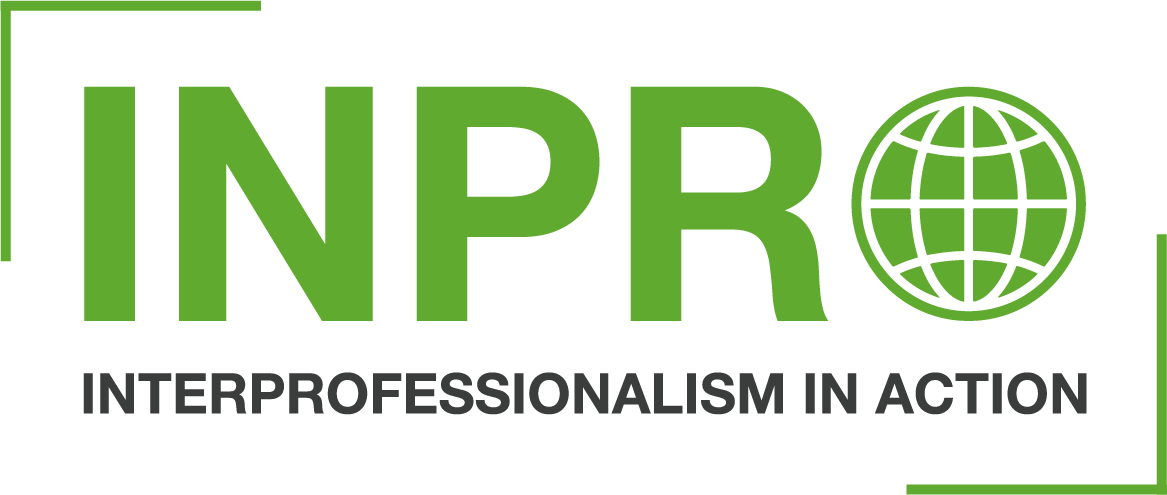Mainpage IP-Education
Subpage 1 Rehabilitation practice
Subpage 2 Academic classroom
Subpage 3 Scientific background IP-Education
Scientific background
With the help of an online questionnaire, approaches from the four INPRO countries were obtained. The collection of the findings was summarised in a collection of promising IPE approaches: 
The exchange of experience across countries, universities and professions, such as via design thinking workshops as part of design-based research, facilitated the implementation of IPECP. New didactics and educational tools were developed in English or national languages, such as the ICF Online Collaboration Form in English 

Journeys of the involved were described and process guides for educators in higher education and rehabilitation practice were developed and learnings evaluated.
According to the Kirkpatrick model, the evaluation consisted of four levels:
- Level 1: Reactions from lecturers, students or professionals, for example regarding an international online learning intervention
Link, our process guides or an open exchange forum between higher education and rehabilitation
Link.
- Level 2: Learnings were measured via the EPIS Scale
Link. The Extended Professional Identity Scale by Reinders et al. (2020) was used to measure the effect of interprofessional learning interventions in INPRO. The link leads to the English scale.
- Level 3: Behaviour was measured via peer- and self-assessment of learning outcomes or presentations, as well as observations from coaches or patients. By doing so, existing assessment guidelines were followed
Link.
- Level 4: Results were measured and reported via changes in employment of students, process and structures of the institutions, and satisfaction of involved patients. For example, an INPRO Competency Framework several ICF-based materials were developed and used in different ways. Additional learning wards, an interprofessional internship model or continuing education for professionals were implemented (please see the other material sections).
Disclaimer
The European Commission's support for the production of this publication does not constitute an endorsement of the contents, which reflect the views only of the authors, and the Commission cannot be held responsible for any use which may be made of the information contained therein.

